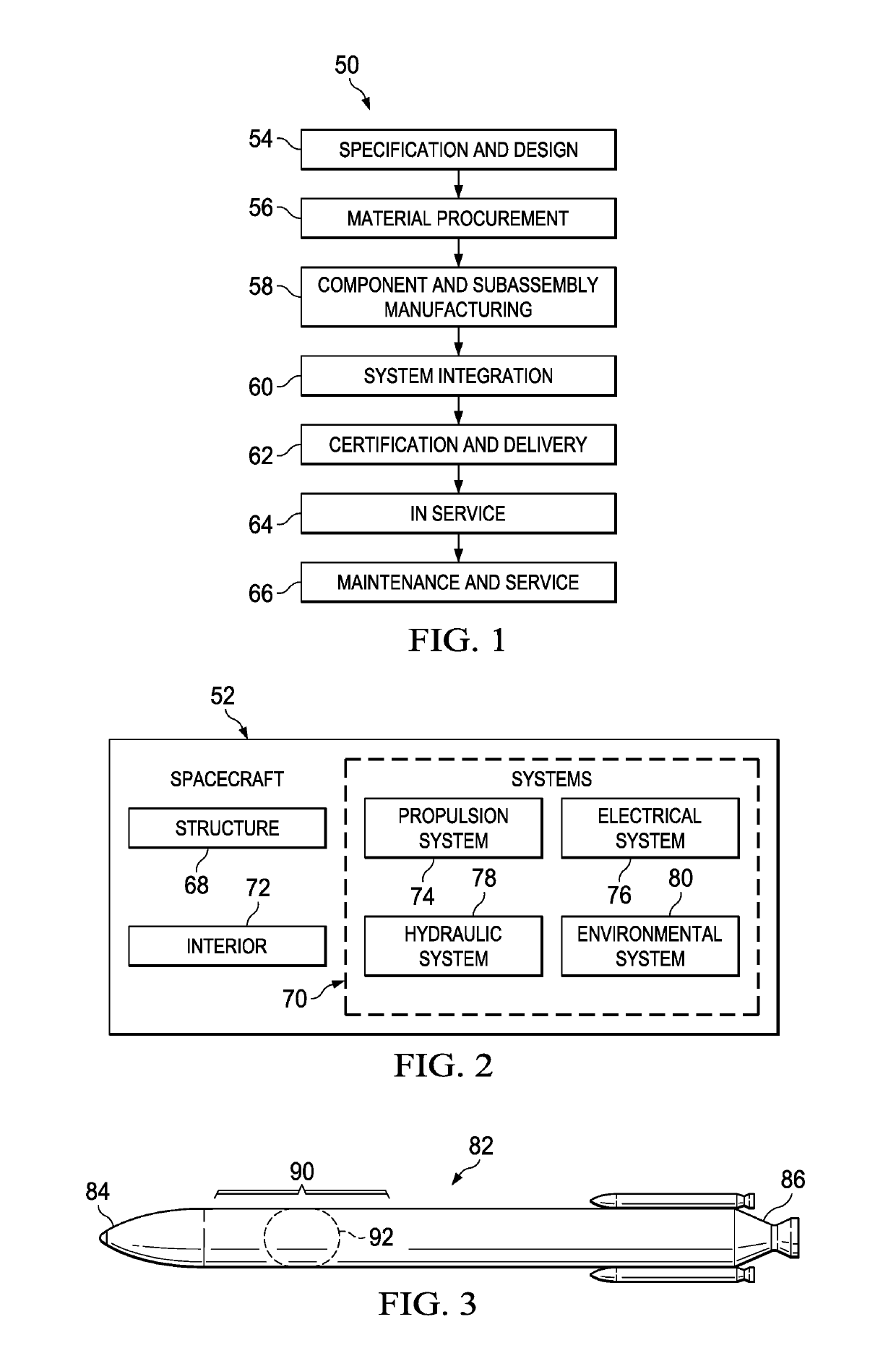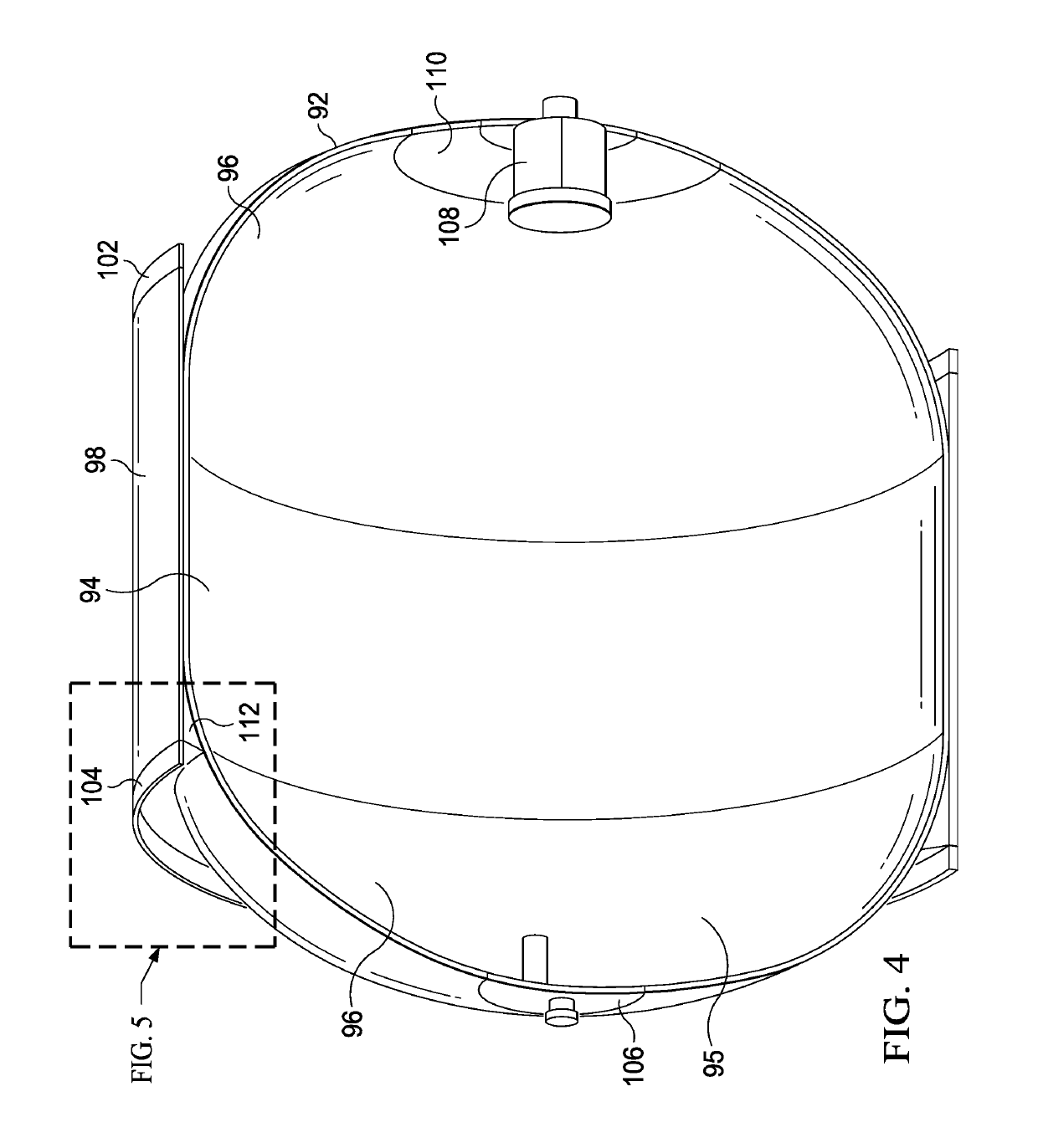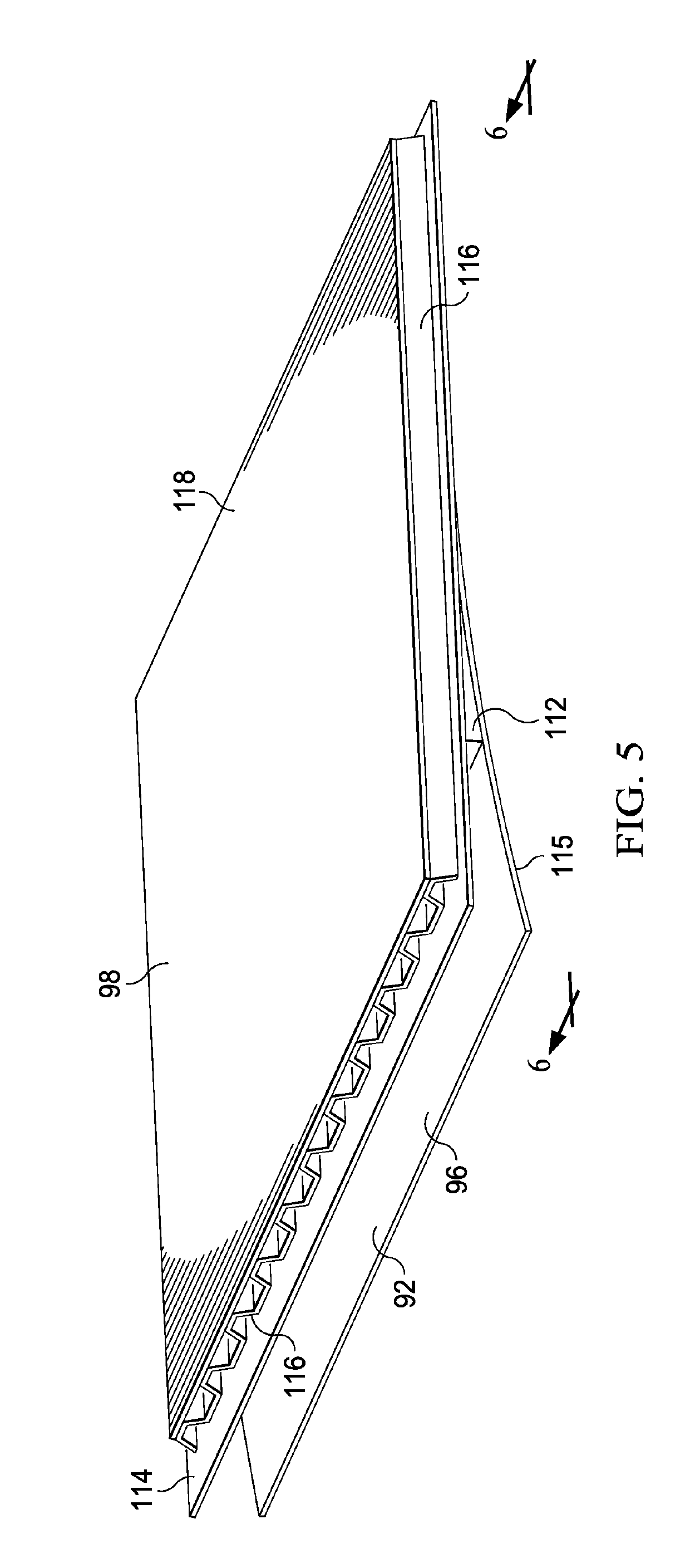Softening strip for controlling stress in joints at very low temperatures
a softening strip and low temperature technology, applied in the field of composite tanks, can solve the problem that the softening strip cannot be re-machined to achieve the desired fit-up precision, and achieve the effect of reducing the amount of adhesive required to bond the softening strip to the structure, precise joint fit and thin bond lines
- Summary
- Abstract
- Description
- Claims
- Application Information
AI Technical Summary
Benefits of technology
Problems solved by technology
Method used
Image
Examples
Embodiment Construction
[0045]Referring to the drawings, embodiments of the disclosure may be described in the context of a spacecraft manufacturing and service method 50 shown in FIG. 1, and a spacecraft 52 shown in FIG. 2. During pre-production, exemplary spacecraft manufacturing and service method 50 may include specification and design 54 of the spacecraft 52 and material procurement 56. During production, component and subassembly manufacturing 58 and system integration 60 of spacecraft 52 in FIG. 2 takes place. Thereafter, the spacecraft 52 may go through certification and delivery 62 in order to be placed in service 64. While in service by a customer, spacecraft 52 scheduled for routine maintenance and service 66, which may include modification, reconfiguration, refurbishment, and other maintenance or service.
[0046]Each of the processes of spacecraft manufacturing and service method 50 may be performed or carried out by a system integrator, a third party, and / or an operator. In these examples, the o...
PUM
| Property | Measurement | Unit |
|---|---|---|
| temperatures | aaaaa | aaaaa |
| cryogenic temperatures | aaaaa | aaaaa |
| temperatures | aaaaa | aaaaa |
Abstract
Description
Claims
Application Information
 Login to View More
Login to View More - R&D
- Intellectual Property
- Life Sciences
- Materials
- Tech Scout
- Unparalleled Data Quality
- Higher Quality Content
- 60% Fewer Hallucinations
Browse by: Latest US Patents, China's latest patents, Technical Efficacy Thesaurus, Application Domain, Technology Topic, Popular Technical Reports.
© 2025 PatSnap. All rights reserved.Legal|Privacy policy|Modern Slavery Act Transparency Statement|Sitemap|About US| Contact US: help@patsnap.com



